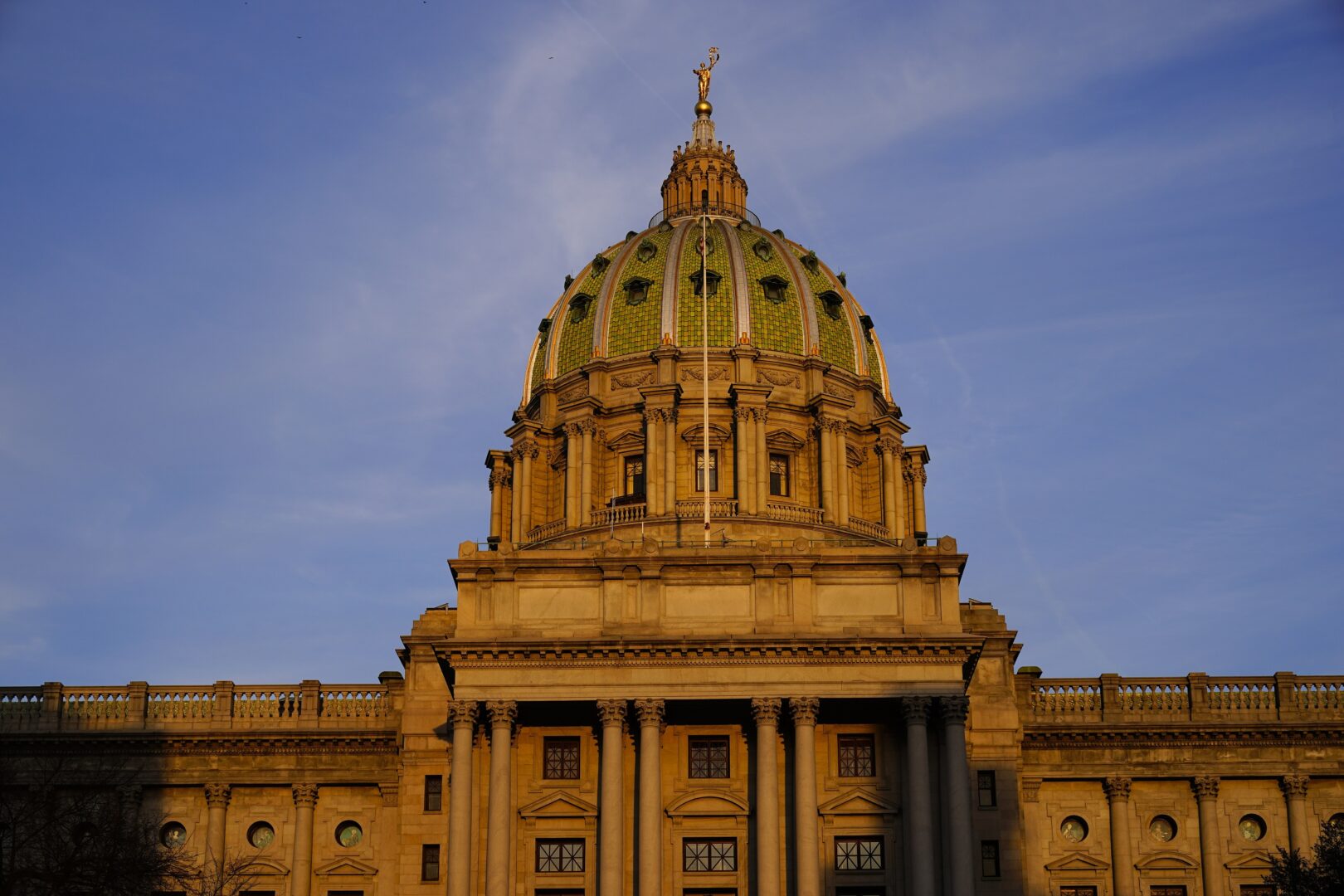
Shown is the Pennsylvania Capitol in Harrisburg, Pa., Thursday, Dec. 16, 2021.
Matt Rourke / AP Photo


Shown is the Pennsylvania Capitol in Harrisburg, Pa., Thursday, Dec. 16, 2021.
Matt Rourke / AP Photo

Matt Rourke / AP Photo
Shown is the Pennsylvania Capitol in Harrisburg, Pa., Thursday, Dec. 16, 2021.
The Harrisburg area has seen 23 days with a high of 90 plus degrees already this summer – that’s three above the average for a year. And we’re about to enter another heat wave with highs in the 90s from July 31 until Aug. 8.
The National Oceanic and Atmospheric Administration says that number is only going to grow in the coming years.
NOAA’s Climate Explorer tool predicts the heat communities across the U.S. can expect based on different greenhouse gas emissions scenarios. The tool is publicly available for communities and decision-makers to use as they prepare for the future, said Morgan Zabow, community heat and health program manager at NOAA.
The tool looks at a range of scenarios ranging from one where emissions continue to increase at their current pace and one where emissions are significantly cut, Zabow said.
Between the 1960s and 1990s, the Harrisburg region averaged 10 days per year when the temperature crossed 90 degrees.
In the high emissions model, the tool projects 88 days above 90 degrees by 2090 in Harrisburg. For the lower emissions model, that number is about 48 days.
According to Pennsylvania’s Climate Plan Action plan, the state is to cut emissions by 26% by 2025 and by 80% by 2050 compared to 2005 levels.
By the end of the decade, the average number of days with a high greater than 90 degrees is predicted to be triple the number from the 1990s.
More frequent heat is impacting not just health, but also the economy and infrastructure, Zabow said.
Compared to the 1990s, the frequency of billion-dollar climate disasters that include drought, storms and floods in Pennsylvania have gone up by a factor of four.
As noted in NOAA’s Billion-Dollar Weather and Climate Disaster site, “shorter time intervals between disasters can mean less time and resources available to respond, recover and prepare for future events. This increased frequency of events produces cascading impacts that are particularly challenging to vulnerable socioeconomic populations.”
The projections from Climate Explorer can “help decision-makers recognize that, hey, if we are starting to mitigate and make these changes now, that maybe we can be ready or prepared for if those days do happen,” Zabow said.
Pennsylvania recorded its warmest January-June period on record, according to NOAA’s National Climate Report.
Yet another heat wave is forecast for central Pennsylvania in the first week of August.
NOAA is calling the heat alert “major” meaning the heat affects anyone without effective cooling and/or adequate hydration. The forecast for daytime highs is in the 90s with a heat index – how hot it actually feels – exceeding 100 degrees.
The National Weather Service in State College says it might not be the last one this summer.
“The month of August in general looks like above normal temperatures, and there’s a good chance of above normal temperatures averaged across the coming three month period for Central Pennsylvania,” said Craig Evanego with the NWS.
StateImpact Pennsylvania is a collaboration among WITF, WHYY, and the Allegheny Front. Reporters Reid Frazier, Rachel McDevitt and Susan Phillips cover the commonwealth’s energy economy. Read their reports on this site, and hear them on public radio stations across Pennsylvania.
(listed by story count)
StateImpact Pennsylvania is a collaboration among WITF, WHYY, and the Allegheny Front. Reporters Reid Frazier, Rachel McDevitt and Susan Phillips cover the commonwealth’s energy economy. Read their reports on this site, and hear them on public radio stations across Pennsylvania.
Climate Solutions, a collaboration of news organizations, educational institutions and a theater company, uses engagement, education and storytelling to help central Pennsylvanians toward climate change literacy, resilience and adaptation. Our work will amplify how people are finding solutions to the challenges presented by a warming world.